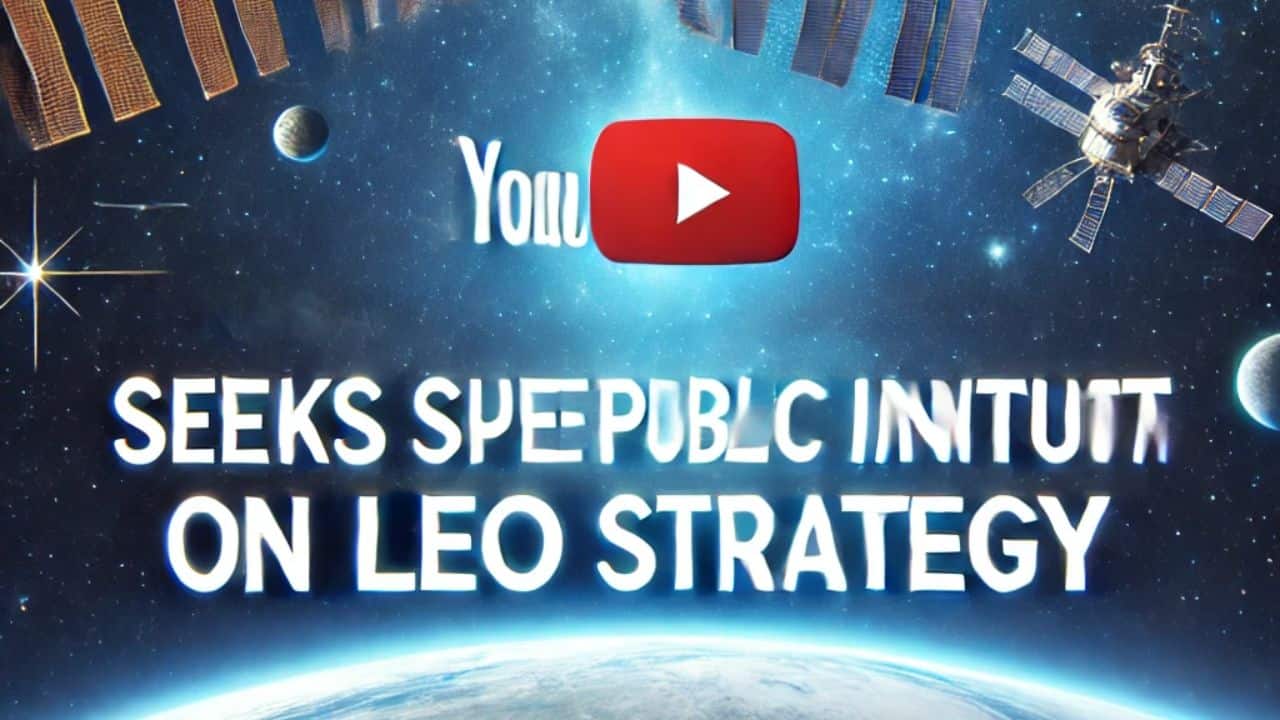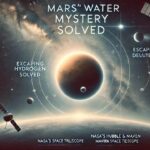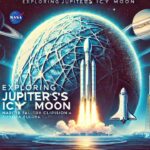NASA, Low Earth Orbit, Microgravity, Space Exploration, International Space Station, LEO Strategy, Space Research, Space Industry, NASA Goals, Space Technology, Space Collaboration
Learn how NASA is inviting public feedback from industry, academia, and international partners to shape the future of human presence and microgravity research in low Earth orbit. Discover NASA’s draft goals and objectives for the next generation of space exploration.

NASA Invites Public Input on Low Earth Orbit Microgravity Strategy
NASA, the U.S. space agency renowned for its pioneering human spaceflight programs, is once again at the forefront of advancing space exploration and scientific research. As NASA and its partners continue to conduct groundbreaking research aboard the International Space Station (ISS), the agency has announced a new initiative that seeks feedback from U.S. industry, academia, international partners, and other stakeholders. This feedback is crucial in shaping the next generation of human presence in low Earth orbit (LEO). The initiative represents NASA’s commitment to ensuring that its goals and objectives align with the evolving needs of the global space community.
The Vision for Low Earth Orbit: Building on Past Achievements
Since the inception of its human spaceflight programs, NASA has consistently built upon its previous successes, expanding humanity’s understanding of living and working in space. The ISS, which has been continuously inhabited since 2000, serves as a testament to the collaborative efforts of NASA and its international partners. It has provided a platform for scientific discoveries that have improved life on Earth and paved the way for future deep space exploration.
Pam Melroy, NASA’s Deputy Administrator, emphasized the importance of this legacy, stating, “From the very beginning, NASA’s flagship human spaceflight programs have built upon each other, expanding our knowledge and experience of humans living and working in space.” Melroy’s statement highlights NASA’s commitment to leveraging its past experiences to inform the future direction of space exploration.
With the commercial sector increasingly involved in space activities, NASA faces new challenges and opportunities. Companies are now developing human-enabled platforms for LEO, which raises the critical question: What should NASA’s goals and objectives be to advance future science and exploration missions? This question lies at the heart of NASA’s current initiative, as the agency seeks to define a clear and strategic path forward.
Draft Goals and Objectives: A Framework for the Future
To guide the next phase of human presence in LEO, NASA has published draft high-level goals and objectives. These objectives are organized into six main areas:
- Science: Enhancing scientific research in microgravity and related disciplines, with a focus on improving life on Earth and enabling future space exploration.
- Exploration-Enabling Research and Technology Development: Advancing technologies and research that will support deep space exploration, including missions to the Moon and Mars.
- Commercial Low Earth Orbit Infrastructure: Supporting the development of a sustainable commercial presence in LEO, including the creation of new platforms and services.
- Operations: Optimizing the operations of human and robotic systems in LEO to ensure safety, efficiency, and the continuous advancement of capabilities.
- International Cooperation: Strengthening partnerships with international space agencies and organizations to achieve shared goals and maximize the benefits of space exploration.
- Workforce and Engagement: Developing a skilled workforce and engaging the public and educational institutions to inspire the next generation of space explorers.
These 42 key points provide a comprehensive framework for NASA’s future activities in LEO. However, NASA recognizes that feedback from a broad range of stakeholders is essential for refining these objectives and ensuring they meet the needs of the global space community.
The Role of Feedback in Shaping NASA’s Strategy
Ken Bowersox, the Associate Administrator for the Space Operations Mission Directorate at NASA Headquarters, underscored the importance of feedback in the strategic planning process. “Feedback is essential for shaping our long-term microgravity research and development activities,” Bowersox said. He emphasized NASA’s commitment to refining its objectives with input from both internal and external partners.
To facilitate this feedback process, NASA plans to conduct two invite-only workshops in September. The first workshop will focus on gathering insights from international partners, while the second will engage U.S. industry and academic representatives. These workshops are designed to foster open dialogue and collaboration, ensuring that NASA’s strategy is informed by diverse perspectives.
In addition to these workshops, NASA employees are encouraged to provide input through internal agency channels. This inclusive approach reflects NASA’s recognition of the rapidly evolving LEO environment and the need to adapt its strategies accordingly.
The Strategic Importance of Low Earth Orbit
Low Earth orbit plays a critical role in NASA’s broader space exploration goals. It serves as a proving ground for new technologies, a platform for scientific research, and a hub for international collaboration. The ISS, in particular, has been instrumental in demonstrating the value of sustained human presence in space. It has enabled research that is not possible on Earth, from studying the effects of microgravity on the human body to testing new materials and technologies.
Robyn Gatens, the International Space Station Director and Acting Director of Commercial Spaceflight at NASA Headquarters, highlighted the growing recognition of LEO’s strategic importance. “Organizations are increasingly recognizing the transformative benefits of space, with both governments and commercial activities leveraging the International Space Station as a testbed,” Gatens said.
As NASA looks to the future, the agency is focused on developing a comprehensive strategy that will guide the next chapter of U.S. human space exploration. This strategy will build on the successes of the ISS and other LEO initiatives while also addressing new challenges and opportunities. By seeking input from a wide range of stakeholders, NASA aims to ensure that its strategy is robust, forward-looking, and aligned with the needs of the global space community.
The Future of Human Presence in Low Earth Orbit
The future of human presence in LEO is likely to be shaped by a combination of government-led initiatives and commercial activities. As private companies continue to develop new space platforms and services, NASA’s role will evolve. The agency will likely focus on supporting these commercial efforts while also pursuing its own research and exploration objectives.
One of the key challenges in this evolving landscape is ensuring that LEO remains accessible and sustainable for future generations. This includes addressing issues such as space debris, orbital congestion, and the long-term health and safety of astronauts. NASA’s draft goals and objectives reflect a commitment to tackling these challenges while also advancing the broader goals of space exploration.
International Cooperation: A Pillar of Success
International cooperation has been a cornerstone of NASA’s human spaceflight programs, and this will continue to be the case in the future. The ISS is a prime example of successful international collaboration, with contributions from space agencies around the world, including NASA, Roscosmos, ESA, JAXA, and CSA. This collaborative spirit will be crucial as NASA works to achieve its new goals and objectives in LEO.
By engaging with international partners through the upcoming workshops, NASA aims to strengthen these relationships and ensure that its strategy aligns with global space exploration goals. This will help maximize the benefits of LEO activities and ensure that all partners can contribute to and benefit from the next phase of human space exploration.
Conclusion: A Collaborative Approach to the Future
NASA’s invitation for public input on its LEO microgravity strategy marks an important step in the agency’s efforts to shape the future of human space exploration. By seeking feedback from a diverse range of stakeholders, NASA is demonstrating its commitment to collaboration, transparency, and inclusivity.
As the agency finalizes its strategy later this year, the input received from industry, academia, international partners, and other stakeholders will play a crucial role in shaping the next generation of human presence in LEO. This collaborative approach will help ensure that NASA’s goals and objectives are not only ambitious but also achievable and aligned with the broader needs of the global space community.
In the coming years, NASA’s strategy for LEO will serve as a roadmap for future scientific discoveries, technological advancements, and international partnerships. It will build on the legacy of the ISS while also paving the way for new opportunities in space exploration. With the continued support of its partners, NASA is poised to lead the way into the next chapter of human spaceflight, ensuring that the benefits of space exploration are shared by all.
Read More
- NASA and Sierra Space Dream Chaser Arrives in Florida for Launch Prep
- NASA Citizen Scientists Discover Hypervelocity Star Escaping Milky Way at 1 Million MPH
- NASA Artemis Generation: Cultivating the Moon Trees Across America
- NASA Invites Media to Northrop Grumman 21st Station Resupply Launch










